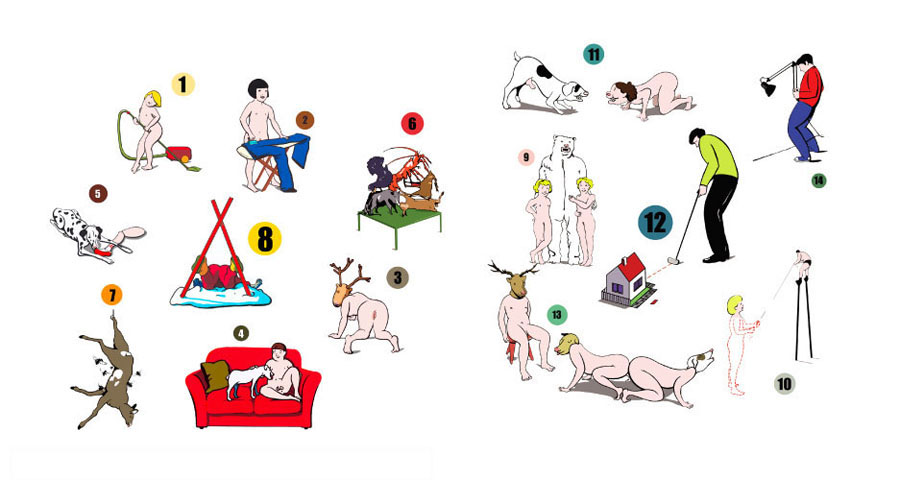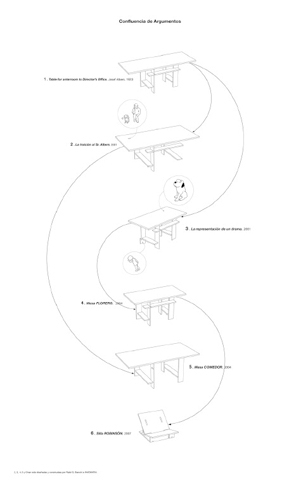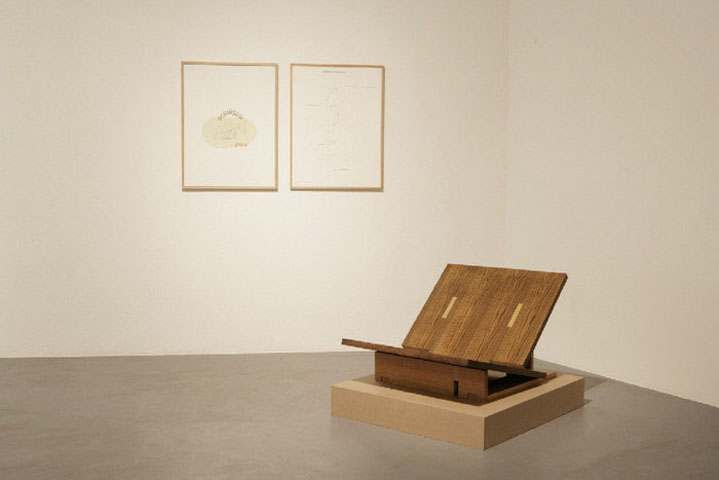.jpg)




.jpg)




In this multi-layered work, Bianchi begins with a conference table designed in Bauhaus style by Josef Albers in 1923. He then links this table to Daniel Defoe's famous literary hero, Robinson Crusoe, as well as to the castaway Scottish sailor Alexander Selkirk, who inspired Defoe's tale.
In the first stage of the piece, Bianchi ordered a table made in accordance with a photograph of Albers' table, and proceeded to deconstruct the table and its drawings by adding or redrawing table parts, and playing with the functionality and rationality of the original design. He proceeded to detach one of the table's actual legs, and undo its basic symmetry. When Bianchi discovered that the original table has been lost, he linked this loss to the disappearance of Selkirk, and as he continued transforming the table he eventually turned it into a chair, which he calls a chair for Robinson Crusoe.
The work reveals a fascination with process, rather than product. Along with the reconstruction of Albers' lost table, it offers a thorough examination of that reconstruction, its materials, aesthetics, functionality, purpose and effectiveness.